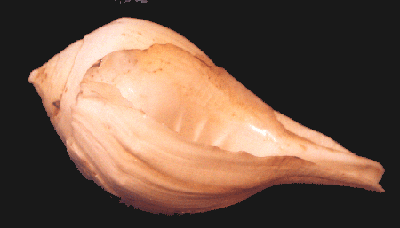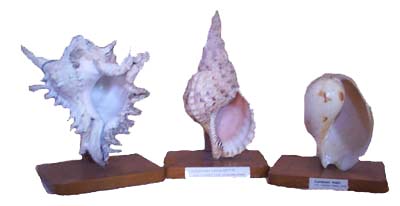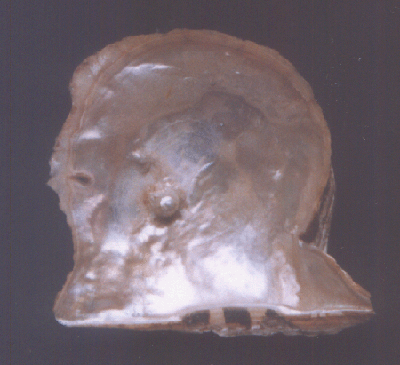|
The Sacred Chank
The sacred Chank, Xancus pyrum occurs
nowhere in Asia outside of India and the Andaman Islands. The left-handed or sinistral
specimens of Chanks in which the aperture is on the left hand side of the observer are of the
great value on account of the extreme rarity and are held in veneration by Hindus and
Buddhists.
|

|

|
Murex, Cymatium and Melon Shell
The largest of all Indian muricids is murex ramosus. This shell is found
associated with the larger horned helmet shells in deep waters; Cymatium variegatum is a large
triton shell live in shallow water on the sea bottom; the Melon shell is otherwise known as
the "beggar's bowl" lives in the sea bottom about five to six fathoms deep.
|
| Interior view of Shell of Pearl
Oyster
Pteria vulgaris and pteria margaritifera
are two of the most common species of pearl oysters recorded from Indian waters. They are
gregarious and form regular beds around Tuticorin, Sri Lanka and the Gulf of Mannar. They live
attached to rocks and stones by a strong byssus. They are capable of crawling short distances.
|

|